About Me

- Noah Price
- A poet is an unhappy being whose heart is torn by secret sufferings, but whose lips are so strangely formed that when the sighs and the cries escape them, they sound like beautiful music... and then people crowd about the poet and say to him: "Sing for us soon again;" that is as much as to say, "May new sufferings torment your soul" - Soren Kierkegaard
Monday, September 7, 2009
Thursday, July 9, 2009
The Silent Movie Theatre
Well it's been a while since my last post.
I found a way to vacation anywhere in the world..
Just buy a postcard of place you really want to go,
sit back and stare at it intently and your there..
A few weeks ago I attended an event at the silent
movie theatre here in Los Angeles.
Unfortunately the even had nothing to do with silent film.
It was a screening for the Everything is Terrible movie,
which is a very famous blog site that is truly loyal to it's name.
The movie was funny but I could not help myself from wandering
off through the theatre to marvel at all the cool posters and portraits
ornamenting the walls. I can't wait to go back.
Check out the programs on their website :
The Cinefamily
I found a way to vacation anywhere in the world..
Just buy a postcard of place you really want to go,
sit back and stare at it intently and your there..
A few weeks ago I attended an event at the silent
movie theatre here in Los Angeles.
Unfortunately the even had nothing to do with silent film.
It was a screening for the Everything is Terrible movie,
which is a very famous blog site that is truly loyal to it's name.
The movie was funny but I could not help myself from wandering
off through the theatre to marvel at all the cool posters and portraits
ornamenting the walls. I can't wait to go back.
Check out the programs on their website :
The Cinefamily
Wednesday, June 3, 2009
The big five studios
Warner Bros. Pictures, incorporated in 1923 by Polish brothers (Jack, Harry, Albert, and Sam); in 1925, Warner Brothers merged with First National, forming Warner Bros.-First National Pictures; the studio's first principal asset was Rin Tin Tin; became prominent by 1927 due to its introduction of talkies (The Jazz Singer (1927)) and early 30s gangster films; it was known as the "Depression studio"; in the 40s, it specialized in Bugs Bunny animations and other cartoons
Warner Bros.
2.
Adolph Zukor's Famous Players (1912) and Jesse Lasky's Feature Play - merged in 1916 to form Famous Players-Lasky Corporation; it spent $1 million on United Studios' property (on Marathon Street) in 1926; the Famous Players-Lasky Corporation became Paramount studios in 1927, and was officially named Paramount Pictures in 1935; its greatest silent era stars were Mary Pickford and Douglas Fairbanks; Golden Age stars included Mae West, W.C. Fields, Bing Crosby, Bob Hope, and director Cecil B. DeMille
Famous Players-Lasky
(Paramount)
3.
RKO (Radio-Keith-Orpheum) Pictures, evolved from the Mutual Film Corporation (1912), was established in 1928 as a subsidiary of RCA; it was formed by RCA, Keith-Orpheum Theaters, and the FBO Company (Film Booker's Organization) - which was owned by Joseph P. Kennedy (who had already purchased what remained of Mutual); this was the smallest studio of the majors; kept financially afloat with top-grossing Astaire-Rogers musicals in the 30s, King Kong (1933), and Citizen Kane (1941); at one time, RKO was acquired by eccentric millionaire Howard Hughes
RKO
4.
Marcus Loew of Loew's, Inc., was the parent firm of what eventually became Metro-Goldwyn-Mayer. Metro Pictures Corporation was a production company founded in 1916 by Richard A. Rowland and Louis B. Mayer. In 1918, Mayer left this partnership to start up his own production company in 1918, called Louis B. Mayer Pictures. In 1920, Metro Pictures Corporation (with its already-acquired Goldwyn Pictures Corporation) was purchased by early theater exhibitor Marcus Loew of Loew's Inc. In another acquisition, Loew merged his 'Metro-Goldwyn production company with Louis B. Mayer Pictures.
So, in summary, MGM, first named Metro-Goldwyn Pictures, was ultimately formed in 1924 from the merger of three US film production companies: Metro Pictures Corporation (1916), Goldwyn Pictures Corporation (1917), and the Louis B. Mayer Pictures Company (1918); Irving Thalberg (nicknamed the 'boy wonder') was head of production at MGM from 1924 until his death in 1936; the famous MGM lion roar in the studio's opening logo was first recorded and viewed in a film in 1928; its greatest early successes were The Big Parade (1925), Broadway Melody (1929), Grand Hotel (1932), Mutiny on the Bounty (1935), A Night at the Opera (1935), The Good Earth (1937), Gone With the Wind (1939), The Wizard of Oz (1939), as well as Tarzan films, Tom and Jerry cartoons, and stars such as Clark Gable, Greta Garbo, and Spencer Tracy
Metro-Goldwyn-Mayer
5.
Fox Film Corporation/Foundation, founded in 1912 by NY nickelodeon owner William Fox (originally a garment industry worker), was first known for Fox Movietone news and then B-westerns; its first film was Life's Shop Window (1914); it later became 20th-Century Fox, formed through the 1935 merger of 20th Century Pictures Company (founded in 1933 by Darryl F. Zanuck) and Fox; it became famous for Shirley Temple films in the mid-30s and Betty Grable musicals in the 40s
For more information click here
Warner Bros.
2.
Adolph Zukor's Famous Players (1912) and Jesse Lasky's Feature Play - merged in 1916 to form Famous Players-Lasky Corporation; it spent $1 million on United Studios' property (on Marathon Street) in 1926; the Famous Players-Lasky Corporation became Paramount studios in 1927, and was officially named Paramount Pictures in 1935; its greatest silent era stars were Mary Pickford and Douglas Fairbanks; Golden Age stars included Mae West, W.C. Fields, Bing Crosby, Bob Hope, and director Cecil B. DeMille
Famous Players-Lasky
(Paramount)
3.
RKO (Radio-Keith-Orpheum) Pictures, evolved from the Mutual Film Corporation (1912), was established in 1928 as a subsidiary of RCA; it was formed by RCA, Keith-Orpheum Theaters, and the FBO Company (Film Booker's Organization) - which was owned by Joseph P. Kennedy (who had already purchased what remained of Mutual); this was the smallest studio of the majors; kept financially afloat with top-grossing Astaire-Rogers musicals in the 30s, King Kong (1933), and Citizen Kane (1941); at one time, RKO was acquired by eccentric millionaire Howard Hughes
RKO
4.
Marcus Loew of Loew's, Inc., was the parent firm of what eventually became Metro-Goldwyn-Mayer. Metro Pictures Corporation was a production company founded in 1916 by Richard A. Rowland and Louis B. Mayer. In 1918, Mayer left this partnership to start up his own production company in 1918, called Louis B. Mayer Pictures. In 1920, Metro Pictures Corporation (with its already-acquired Goldwyn Pictures Corporation) was purchased by early theater exhibitor Marcus Loew of Loew's Inc. In another acquisition, Loew merged his 'Metro-Goldwyn production company with Louis B. Mayer Pictures.
So, in summary, MGM, first named Metro-Goldwyn Pictures, was ultimately formed in 1924 from the merger of three US film production companies: Metro Pictures Corporation (1916), Goldwyn Pictures Corporation (1917), and the Louis B. Mayer Pictures Company (1918); Irving Thalberg (nicknamed the 'boy wonder') was head of production at MGM from 1924 until his death in 1936; the famous MGM lion roar in the studio's opening logo was first recorded and viewed in a film in 1928; its greatest early successes were The Big Parade (1925), Broadway Melody (1929), Grand Hotel (1932), Mutiny on the Bounty (1935), A Night at the Opera (1935), The Good Earth (1937), Gone With the Wind (1939), The Wizard of Oz (1939), as well as Tarzan films, Tom and Jerry cartoons, and stars such as Clark Gable, Greta Garbo, and Spencer Tracy
Metro-Goldwyn-Mayer
5.
Fox Film Corporation/Foundation, founded in 1912 by NY nickelodeon owner William Fox (originally a garment industry worker), was first known for Fox Movietone news and then B-westerns; its first film was Life's Shop Window (1914); it later became 20th-Century Fox, formed through the 1935 merger of 20th Century Pictures Company (founded in 1933 by Darryl F. Zanuck) and Fox; it became famous for Shirley Temple films in the mid-30s and Betty Grable musicals in the 40s
| Warner Brothers | Famous Players-Lasky (Paramount) |
|---|---|
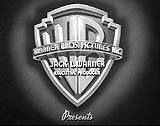 | 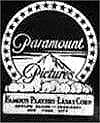 |
| RKO | Metro-Goldwyn-Mayer |
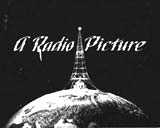 | 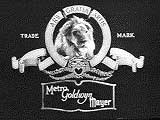 |
| Movietone Newsreels | 20th Century Pictures |
 |  |
| 20th-Century Fox | |
 |
For more information click here
Tuesday, June 2, 2009
Cool site
So I just found this really cool site
with a bunch of old music recordings,
radio shows and much, much more!
I'm so excited about this..
This is the best thing about technology!
The Colonial Club Orchestra - Brunswick Brevities 1929
Audio Archive
old time radio shows
with a bunch of old music recordings,
radio shows and much, much more!
I'm so excited about this..
This is the best thing about technology!
The Colonial Club Orchestra - Brunswick Brevities 1929
Audio Archive
old time radio shows
George W. Johnson

George Washington Johnson (c. October 1846 – January 23, 1914) was a singer and pioneer sound recording artist, the first African American recording star of the phonograph.
Johnson sang as well as whistled, and also was able to give a boisterous laugh in musical pitch. From this he developed the second performance that made him famous,
The laughing song.
Here's a play list that will play
different recordings of the laughing song.
This is such an uplifting song..
I hope it makes you laugh like, ha ha ha..ho ho ho!
Track listing:
The Laughing Coon (1898)
The Laughing Song (1898)
The Laughing Song (1901)
The Laughing Song (1901)
The Laughing Song (1902)
The Whistling Coon (1896)
Lyrics "
THE LAUGHING SONG
(George W. Johnson, 1894)
As I was coming ‘round the corner, I heard some people say,
“Here comes a dandy darky. Here he comes this way.
His heel is like a snowplow and his mouth is like a trap,
And when he opens it gently you will see a fearful gap.”
CHO: Then I laugh, “Ha ha, ha ha ha ha, ha ha ha ha, ha.”
I couldn't stop my laughing, “Ha ha, ha ha ha ha, ha ha ha ha, ha.
Ha ha, ha ha ha ha, ha ha ha ha, ha.”
I couldn't stop my laughing, “Ha ha, ha ha ha ha, ha.”
They said, “His mother was a Princess. His father was a Prince,
And he'd been the apple of their eye if he hadn't been [a] quince.
He[‘ll] be the King of Africa, in the sweet by and bye.”
And when I heard them say it, why, I laughed until I cried. CHO.
An actor came to see me about a week ago.
He said to me, “Come sing a song down at our little show.”
And when he told me about the scenes, so nice and so complete,
I couldn't stop from laughing from my head down to my feet. CHO.
So now, kind friends, just listen to what I'm going to say.
I've tried my best to please you with my simple little lay.
Now, whether you think it's funny or a quiet bit of chaff,
Why, all I'm going to do is just to give this little laugh. CHO.
Lost Sounds: Blacks and the Birth of the Recording Industry, 1890-1919
Time after time

No, not the 1947 song by Sammy Cahn and Julie Styne.
This Time after time is the 1979 film starring Malcolm McDowell, Mary Steenburgen, David Warner, and Charles Cioffi. It was written and directed by Nicholas Meyer,
and adapted from the novel by Karl Alexander.
The year is 1893, Jack the ripper, John Leslie Stevenson (Warner), is on the run from Scotland Yard. To escape imprisonment he steals his colleague, H.G Wells'(McDowell), time machine and travels to 1979, but the heated Wells is not too far behind. While chasing the ripper through the streets of San Francisco, the viewer can get a good feel of what the city must have been like at that time. Like every time travel movie, there's always something or someone that the main character must bring back with them. Wells meets Bank of England employee Amy Robbins (Steenburgen), and she is smitten by his archaic English charm. The pair try to find Stevenson, who has resumed his killings throughout the city, and escort him to the hands of justice in Victorian England.
Today's Mnemonic
WEATHER FORECASTING
Here's an old country saying for judging the likely weather to come, that's actually a mnemonic rhyme:
" A red sky at night, shepherd's delight,
But a red sky int' morning, is a shepherd's warning... "
At sundown, an evening sky appears red in the west when thin high clouds are present to reflect the dying light. Such high clouds usually indicate a warm and dry night without rain the next day. However a reddish tinge in the sky towards sunrise usually indicates the opposite, due to lower clouds of a different nature. At sunrise the early presence of such clouds combined with an obvious rising temperature usually brings rain before too long!
According to Brewster's Dictionary the Italians also have a saying that is somewhat similar:
" Serra rosso et negro mattino
allegra il pelligrino "
("A red evening and a white morning rejoice the pilgrim")
For more mnemonics click here
Here's an old country saying for judging the likely weather to come, that's actually a mnemonic rhyme:
" A red sky at night, shepherd's delight,
But a red sky int' morning, is a shepherd's warning... "
At sundown, an evening sky appears red in the west when thin high clouds are present to reflect the dying light. Such high clouds usually indicate a warm and dry night without rain the next day. However a reddish tinge in the sky towards sunrise usually indicates the opposite, due to lower clouds of a different nature. At sunrise the early presence of such clouds combined with an obvious rising temperature usually brings rain before too long!
According to Brewster's Dictionary the Italians also have a saying that is somewhat similar:
" Serra rosso et negro mattino
allegra il pelligrino "
("A red evening and a white morning rejoice the pilgrim")
For more mnemonics click here
Monday, June 1, 2009
Sherlock Jr. (1924)

Sherlock, Jr. (1924) is an American comedy silent film starring and directed by Buster Keaton and written by Clyde Bruckman, Jean Havez and Joseph A. Mitchell. It features Kathryn McGuire, Joe Keaton and Ward Crane.[1]
In 1991, Sherlock, Jr. was selected for preservation in the United States National Film Registry by the Library of Congress as being "culturally, historically, or aesthetically significant," and on 14 June 2000 the American Film Institute, as part of its AFI 100 Years... series, ranked the film as #62 in the list of the funniest films of all time (AFI's 100 Years... 100 Laughs).
Sunday, May 31, 2009
Photographs and Movies about the Invention of the Airplane
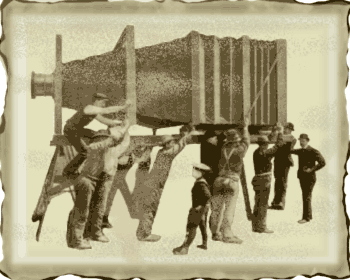
I am easily overwhelmed. Every morning I wake up in the same bed, in the midst of the same surroundings to which I know so well. The pale white walls ornamented with art, the burgundy linen curtains that I move aside to embrace the morning sky. I see the patches of clouds, the dim morning sun yet to reach its brilliance and the airplane passing by casting fleeting shadows on the ground below. These things never become old to me. It's as if my eyes have retained the virgin blue of an infant who is seeing the world for the first time.
Recently I came across a wonderful site dedicated to the history of
Flying machines. Complete with library, images, patents, inventors, merchandise, models, simulator, flight tales, and links to other sites concerning flying machines. I'm so excited to have found this and I hope you all will enjoy it as much as I.
(Click on the title)
Today's Mnemonic
ELEPHANTS
Here's a mnemonic means of recalling the differences between the African and the Indian elephant:
India's big, and its elephant there features
But Africa's bigger, with much bigger creatures.
Or put another way:
India's big, but Africa's bigger,
The same as their elephants - easy to figure!.
There is also another way to tell the difference. Generally speaking, the African elephant's large ears tend to resemble its continent. while the Asian elephant's ears resemble the outline of India!

"India! What a capital idea!"
Here's a mnemonic means of recalling the differences between the African and the Indian elephant:
India's big, and its elephant there features
But Africa's bigger, with much bigger creatures.
Or put another way:
India's big, but Africa's bigger,
The same as their elephants - easy to figure!.
There is also another way to tell the difference. Generally speaking, the African elephant's large ears tend to resemble its continent. while the Asian elephant's ears resemble the outline of India!

"India! What a capital idea!"
Saturday, May 30, 2009
Song of the night
Tonight's song is one of my favorites to sing
in the shower, on the street corner or wherever I may be.
I'll never smile again was written by Ruth Lowe in 1939
and was brought to fame by Tommy Dorsey and his orchestra,
with Ol' Blues Eyes, Frank Sinatra on vocals.
This particular version is very dear to me.
Its the Hi-lo's plus one..
in the shower, on the street corner or wherever I may be.
I'll never smile again was written by Ruth Lowe in 1939
and was brought to fame by Tommy Dorsey and his orchestra,
with Ol' Blues Eyes, Frank Sinatra on vocals.
This particular version is very dear to me.
Its the Hi-lo's plus one..
Poem of the night

GHAZAL OF UNFORSEEN LOVE
By Frederico Garcia Lorca
No one understood the fragrance
of the dark magnolia of your womb.
No one knew how you tormented
a hummingbird of love between your teeth.
A thousand Persian ponies bedded down
in the moonlit plaza of your forehead
while for four nights I lassoed
your waist, the enemy of snow.
Between gypsum and jasmine, your glance
was a pale branchful of seeds.
I searched my breast to give you
the ivory letters that spell always,
always, always: garden of my agony,
your body forever fugitive,
the blood of your veins in my mouth
and your mouth already my tomb, emptied of light.
Friday, May 29, 2009
Pieces of Jules et Jim

Jules and Jim (French: Jules et Jim) is a 1962 French film directed by François Truffaut and based on the semi-autobiographical novel by Henri-Pierre Roché.
Truffaut described the book as 'a perfect hymn to love and perhaps to life' . He came across it during the mid 1950s whilst browsing through some secondhand books in Paris and later befriended the elderly author who approved of the young director's attempt to translate the words on the page into celluloid images.
Here are some lines from the film that I love:
not to mention my favorite scene when Jim took the gun
from Catherine and jumped out the window.. hehe...
Catherine: As a little girl I learned: "Our Father who art in Heaven"
I thought it said "who arts in heaven."
I imagined my father with an easel, painting outside the
pearly gates.
Catherine: Go back to Giberte, since she writes you every day.
Jim: Your unfair.
Catherine: No doubt I am.
But I'm heartless.
That's why I don't love you, and why I'll never love anyone.
Besides, I'm 32 and you're 29.
When you're 40 and I'm 43, you'll want a girl of 25,
and I'll be left alone like a fool.

Jules: Dear imaginary invalid, come as soon as you can.
Catherine awaits a letter.
Write in large letters for her eyes are tired and she
can only read large writing.
Catherine: This paper is your skin.
This ink is my blood.
I'm pressing hard so the ink enters in.
Answer me quickly.
Narrator: They didn't speak, but they made love once more
in that cold, sad hotel room, not knowing why -
perhaps to bring their story to a close.
It was like a burial, or as if they were already dead.
Narrator: So they created nothing.
Jim thought, 'its fine to want to rediscover the laws for
human life, but how practical it must be to conform to
existing ones. We played with the sources of life and lost."

Jim: " A women on a ship gives herself in her imagination to
a stranger."
It struck me as a confession. That's how you explore the
universe.
Catherine: Jules, watch us carefully
Automobiles killed the Automat Star

Imagine a coin-operated vending machine the size of a 7-11 serving all the snack foods and drinks you would typically find there but on real dishes with metal utensils, and drinks in glasses. Automats were the first fast food restaurants where simple foods were served by coin-operated machines and soon after, bill-operated machines. The first automat opened its doors in the U.S on June 12, 1902 in Philadelphia by Horn & Hardart, a German-born, New Orleans-raised entrepreneurial duo
that revolutionized the way Americans ate. The Automat business flourished until 1950's with the growth of Suburbs and fast food restaurants with drive-thru windows.
By the 1970's the Automat era was over.
Horn & Hardart finally closed the doors of their last establishment in 1991. But in 2001 BAMN attempted to revive the Automat in New York City's East Village, only to close down in March of 2009.

Isn't it interesting how things change over time
but in a way stay quintessentially the same.
You have to ask yourself "What's next ?"
Everyday the lines of extinction are becoming more apparent.
When was the last time you saw a Pay phone on a street corner ?
Soon it will be the Mail pan or the Mailman,
"whatever happened to the milkman.. the paperboy.. evening tv
you miss your old familiar friends waiting just around the bend."

Poem of the day

Fragmentary Blue
by: Robert Frost
Why make so much of fragmentary blue
In here and there a bird, or butterfly,
Or flower, or wearing-stone, or open eye,
When heaven presents in sheets the solid hue?
Since earth is earth, perhaps, not heaven (as yet)--
Though some savants make earth include the sky;
And blue so far above us comes so high,
It only gives our wish for blue a whet.
From "New Hampshire", 1923
An evening with Fred Astaire
An Evening With Fred Astaire was a hour-long television special starring Fred Astaire
which broadcast on NBC on October 17, 1958.
Produced at NBC's Color City studios in Burbank, California,
it was the first major television show to be prerecorded on color videotape.
The show was sponsored by Chrysler Corporation, and typical for advertising of the era, Chrysler cars featured prominently in the show; Astaire's final words were "I only hope the show is as good as the cars."
which broadcast on NBC on October 17, 1958.
Produced at NBC's Color City studios in Burbank, California,
it was the first major television show to be prerecorded on color videotape.
The show was sponsored by Chrysler Corporation, and typical for advertising of the era, Chrysler cars featured prominently in the show; Astaire's final words were "I only hope the show is as good as the cars."
I busted my head like Fred Astaire

About a year ago I busted my head while skateboarding at Rogers skate park in Inglewood California. My friends rushed me to Centinela Hospital where I sat in the waiting room for about thirty minutes bleeding from my head.
Finally I get to go behind the big white doors separating the zombies from the cure
and I meet a man who asked me questions about my injury. "How did it happen ?"
he said.. "See, well, Sir, my skateboard and I" "Ah ha, another skateboarder, why I remember a long time go a famous dancer by the name of Fred Astaire came to me with a busted head, he told me he tried to ride a skateboard because his grand children could not believe he could do all these amazing things and not know how to ride a skateboard" I felt so privileged to be in the presence of someone who actually had a conversation with Fred Astaire. I also thought it was funny that the park where I just happened to bust my head is called Rogers park, like Ginger Rogers..
Here is a lovely video I found on Youtube
of Fred and Ginger dancing Cheek to Cheek
in the 1935 screwball musical Top Hat.
The film was written by Allan Scott, and Dwight Taylor. It was directed by Mark Sandrich. Other than the dancing, what really makes this movie a classic
are the songs, all written by the amazing Irving Berlin.
Thursday, May 28, 2009
Noah's Ark
So you have arrived, a little late, some say better to come
late than not to come at all. I say, "Jai guru deva om"
This is the International Silver String Submarine Blog
All of the material you'll find haunting these yellow portals
pairs nicely with a glass of fine wine and an open mind.
I am a connoisseur of all things old and forgotten,
lost and found, dead and gone, the ghost of which
still lingers around in a dusty thrift store, garage sales
or a digital database.
The name: International Silver String Submarine Blog
is adapted from an Our Gang routine
in which the gang is auditioning for a radio program
as the "International Silver String Submarine Band"
I believe the world is beautiful
but there are things about today
that make me long for yesterday.
- Noah Price
late than not to come at all. I say, "Jai guru deva om"
This is the International Silver String Submarine Blog
All of the material you'll find haunting these yellow portals
pairs nicely with a glass of fine wine and an open mind.
I am a connoisseur of all things old and forgotten,
lost and found, dead and gone, the ghost of which
still lingers around in a dusty thrift store, garage sales
or a digital database.
The name: International Silver String Submarine Blog
is adapted from an Our Gang routine
in which the gang is auditioning for a radio program
as the "International Silver String Submarine Band"
I believe the world is beautiful
but there are things about today
that make me long for yesterday.
- Noah Price
Subscribe to:
Comments (Atom)